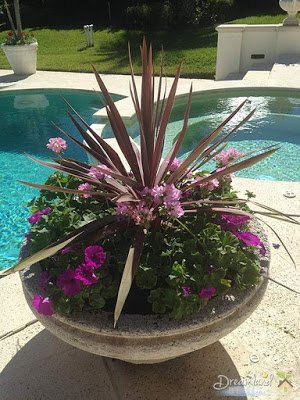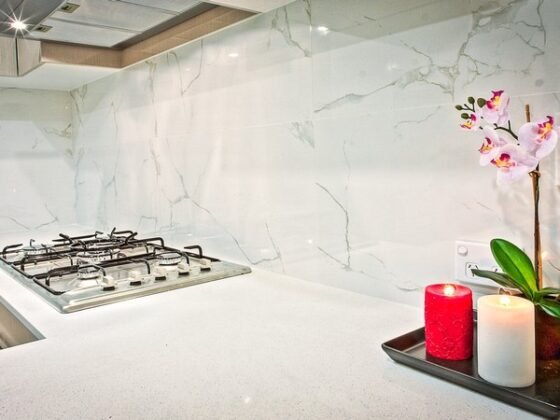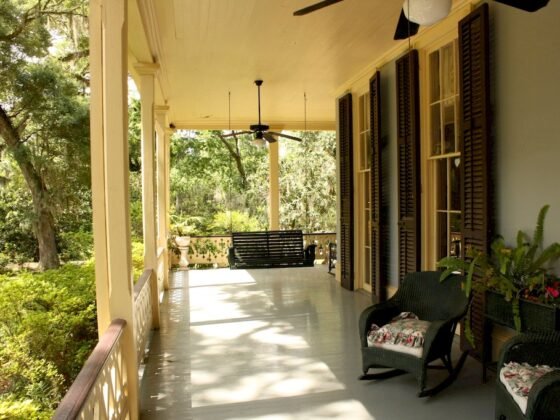Table of Contents Show
With container gardening everything from the soil you use to the size of the containers you use are under your full control.
10 Container Gardening Tips
Below are my top 10 tips to bring colour and greenery to your patio or balcony using a variety of containers.
1. It All Begins With Proper Soil Preparation
Whether you have a home garden like we have today or you are creating a container garden on your balcony you need quality soil for best results so let’s start with the soil.
The soil has to be of the right texture for the roots to grow healthier. The best for container plants is a soilless mixture of peat moss, vermiculite and perlite in a 2:1:1 ratio. A soluble fertilizer can be used once in two weeks. Check the moisture content daily and make sure every container has a proper drainage hole. Also ensure that the mixture is well watered daily.
2. Match The Plants
Match the pot to the plant. It is easy to overlook this aspect in container gardening. Tall plants have longer roots, so the container must have enough depth for the roots to grow. Plants grown on land find their own space to get rooted, but in a container garden, the growth is limited to the size of the container. So taller plants need containers with depth and smaller pots can grow small plants.
3. Showcase The Plants
It is advisable to grow one plant per container to showcase the plant as well as for better management of the garden, grow different varieties in more containers. For instance grow a plant with thick succulent leaves in one container and grow a tropical plant with giant leaves in another. This arrangement works well to exhibit each plant.
4. Your Choice of Containers
As the most challenging issue in container gardening is keeping enough moisture in the pot, small pots are not suitable as the soil dries out quickly. Though terra cotta pots are attractive, they dry out the soil very quickly. So do metal containers. Italian clay pots, glazed ceramic and concrete containers that are medium sized are cool and keep the soil moist. It is a good idea to use trolleys that can be used to move the pots to a location that has shade when the afternoon gets too hot for the plants.
 |
| Container garden, Creeping jenny, Mona lavender |
5. Know What Plants to Grow
Herbs are easiest to grow. They are hardier and can tolerate the vagaries of weather than other plants. Initially people tend to go for lot of perennial and seasonal flowering plants, but these are not only expensive but also need to be tended with a lot of care as they are sensitive to extreme temperatures and moisture. Perennials, herbs and even citrus fruit trees are easier to grow.
6. Know When to Water Your Plants
Plants with spongy and thick leaves do not require much water so they can be placed in remote locations. Tropical plants need to be irrigated often and grow best when placed near a water source. Check the soil for a week after planting for moisture and how often they might require watering. Tropical plants must be soaked so that one third of the water seeps from the bottom of the container.
7. Eye Catching Garden
Choose colors that match the general appearance of the house. Shrubs can be placed in the lower levels and tall potted plants should line up near the entrance for maximum effect. Some plants trail on the ground while others reach for the sun. Know the growth pattern of the plants to get the exact look that you want. Herbs that help in cooking can be kept near the kitchen window or doorstep for convenience.
8. Details That Draw Interest
You can alter the persona of the plant by keeping an ornamental plant in a plain container and growing a simple looking plant in an ornamental urn. If you live in a house filled with shrubbery, bring in vertical interest by planting tall ones with big, ornamental leaves like exotic banana plants or flowering plants like canna and hollyhock. Add a wide variety of flower and leaf shapes like round, trumpet shaped, broad, or scalloped.
9. Bringing in Change
As the number of plants is limited in a container garden it is important to change the plants as soon as they show signs of fading out and dying. In a landscaped garden there is enough space to grow a large number of plants that can keep the garden looking fresh. Start your container garden in the spring so that it can go on until frost or a little longer in warmer climates.
10. Blossoming in Sequence
As the growing or moving the plants is entirely under the control of the gardener, you can choose seasonal plants that can be sequenced to keep the garden colourful all through the year.
Follow these tips and you can have a great container garden even in a small and congested apartment to enjoy the bounties of nature.











